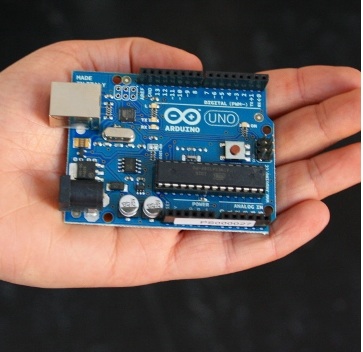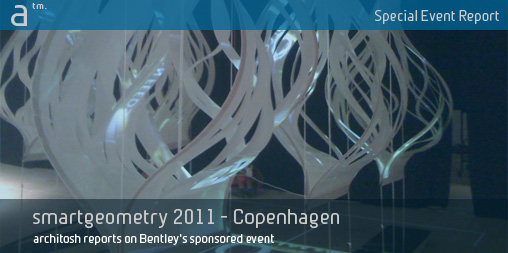The heart and soul of the Smartgeometry Conference is the actual workshop. From the event’s beginnings in 2001 to its present configuration, the workshop is where ideas, strategies, concepts and design-thinking gets tested, exercised and fleshed out. Shane Burger, of Grimshaw Architects PC in New York, is one of the directors of the Smartgeometry organization and stated that the entire history of the event is one in which a few dedicated and inspired professionals–from computational or advanced computing divisions of renowned architectural practices–got together to explore the state-of-the-art of computing in architecture.
Advertisement
Over the years this annual get-together formed into a conference, a merger of professionals, academics, students and the software industry. As the current Smartgeometry website states, “As smartgeometry has progressed, and the tools and techniques have matured, smartgeometry has emerged as a forum where the new critical language of digital architecture can be formed.”
This Year’s Theme: Building The Invisible
This year the theme of “building the invisible” is an expression that describes the process whereby real world data is incorporated into “design thinking.” A big emphasis at the workshop this year was the use of sensors. These sensors, of the handmade variety, were built around Arduino boards. (see image 01) Now like us you are probably thinking, “what is an Arduino board?” Exactly!

01 - An Arduino board. These small microcontrollers are an open-source hardware and software platform that enable the capture of data from integrated sensors. (image courtesy the Arduino website).
The official website says that “Arduino is a tool for making computers that can sense and control more of the physical world than your desktop computer.” Developed in Italy, these microcontroller boards are open-source hardware and come with an open-source software IDE (intergrated development environment). The reality is these Arduino boards are pretty cool! And we’ll be writing about them in more detail in further reports.
Most of the workshop clusters (there were 10) were using sensors to bring in real-time or captured-time data. This data is the “invisible” information from which designers have the opportunity utilize in the exploration of their design work.
The Workshops
There were ten workshops at this year’s conference and the Smartgeometry website does a very good job of describing them in detail here. So we won’t recap them in that manner. However, we do want to make some notes about several of them and provide some links to relevant information we think you will find interesting.
Use the Force
This was one of the more interesting workshops because of the tools made and employed in their experimental work. Daniel Piker was one of the cluster champions (leaders of the cluster) and he is the creator of the plugin Kangaroo, a physics plugin for Grasshopper and Bentley Generative Components. The goal of this cluster was to explore the link-up between the digital and the physical. The physics engine of Kangaroo was linked up with a malleable floor surface with sensors beneath it (see image 02 below). As you walked on the floor surface sensor data would determine not just force data but motion. This data was fed to Grasshopper which contained a digital representation of the analog, sensor-based floor.

02 - The black floor contains sensors which feed force and motion data into Grasshopper and Bentley GC via Kangaroo and Firefly software. Andy Payne is to the right in this photo.
Another key component in this workshop was the use of a software tool called Firefly. Andy Payne, a licensed architect and doctoral degree candidate at Harvard’s GSD, is Firefly’s creator and a fellow cluster champion. We will be doing a feature on Andy coming up.




Reader Comments
[…] now every man, dog and archinet, has taken the Smart Geometry website and condensed it into a blog post. In […]
This is an excellent new article on the Arduino boards:
http://mac.tutsplus.com/tutorials/electronics/arduino-an-introduction/?utm_source=feedburner&utm_medium=feed&utm_campaign=Feed%3A+mactuts+%28Mactuts%2B%29
Comments are closed.